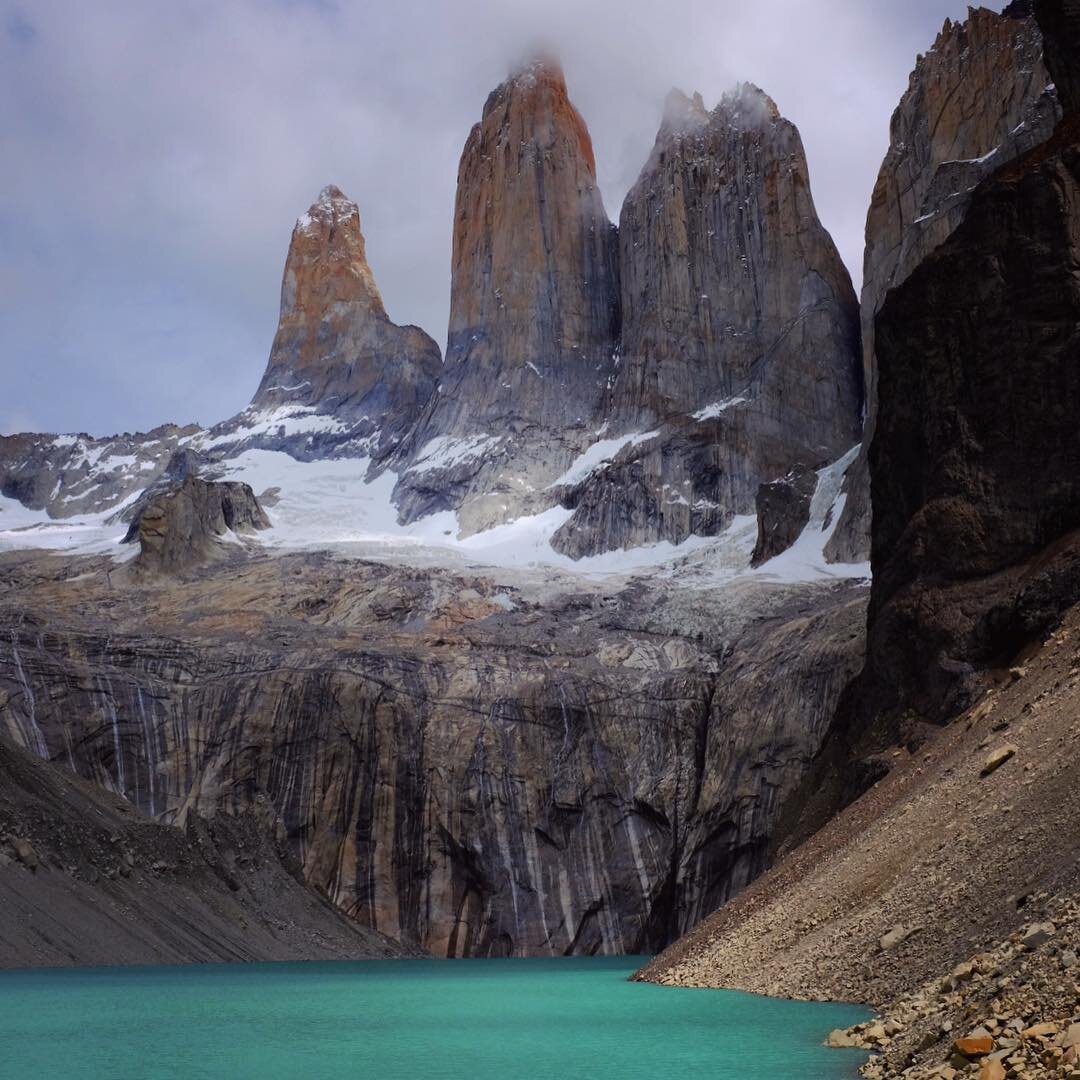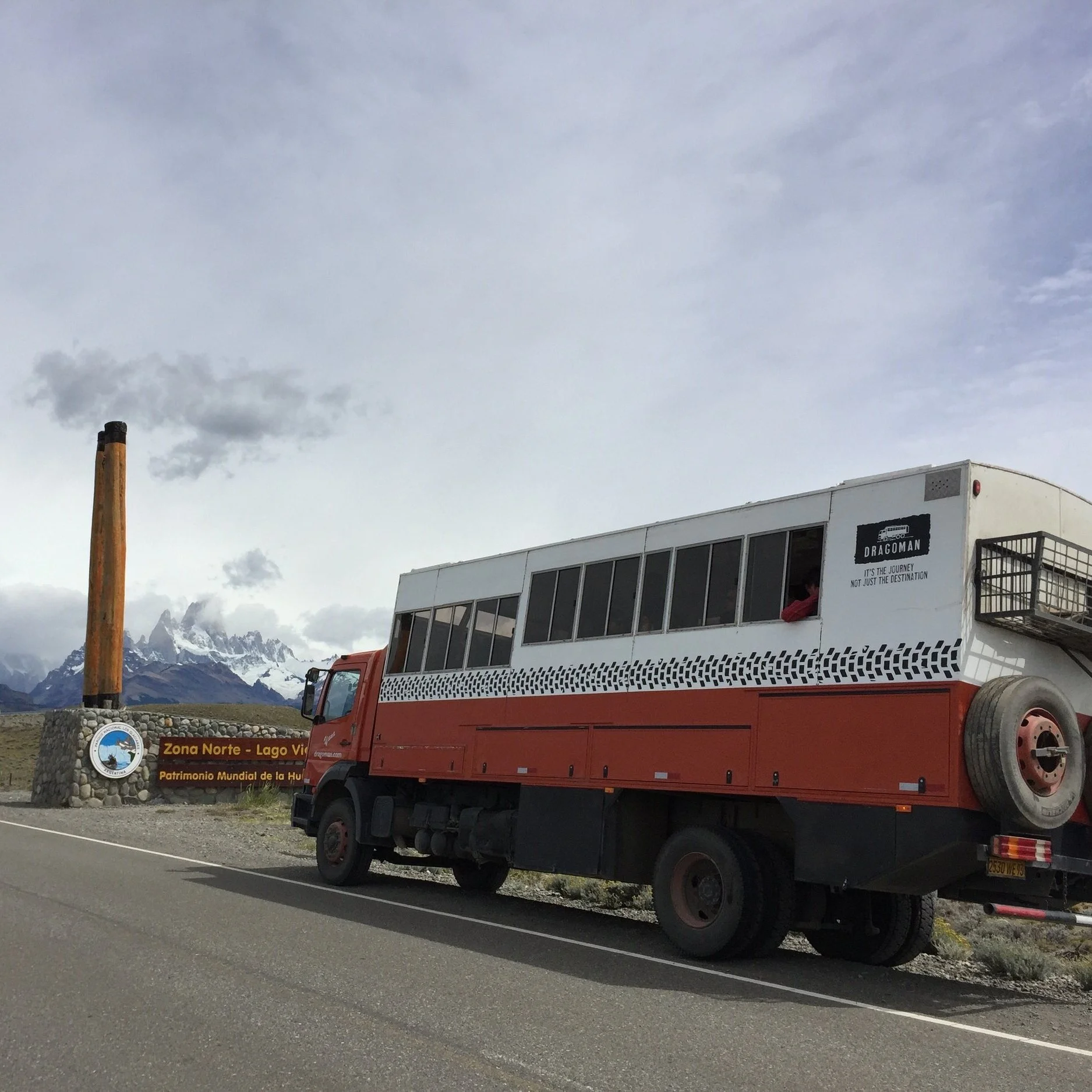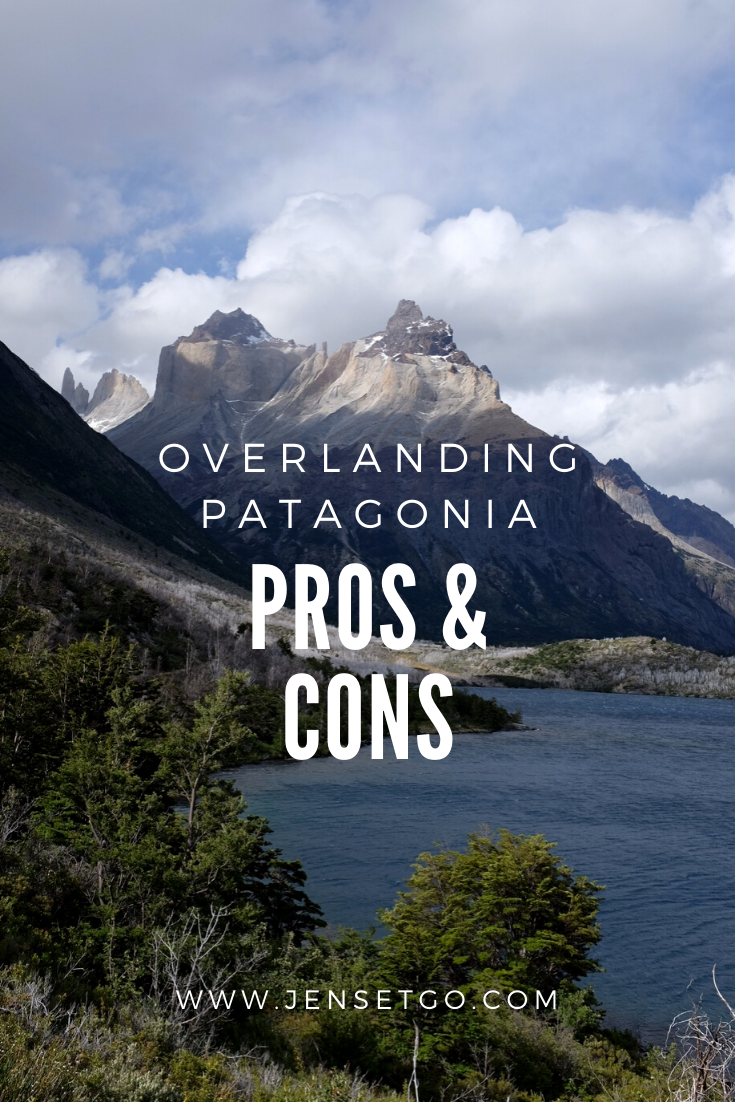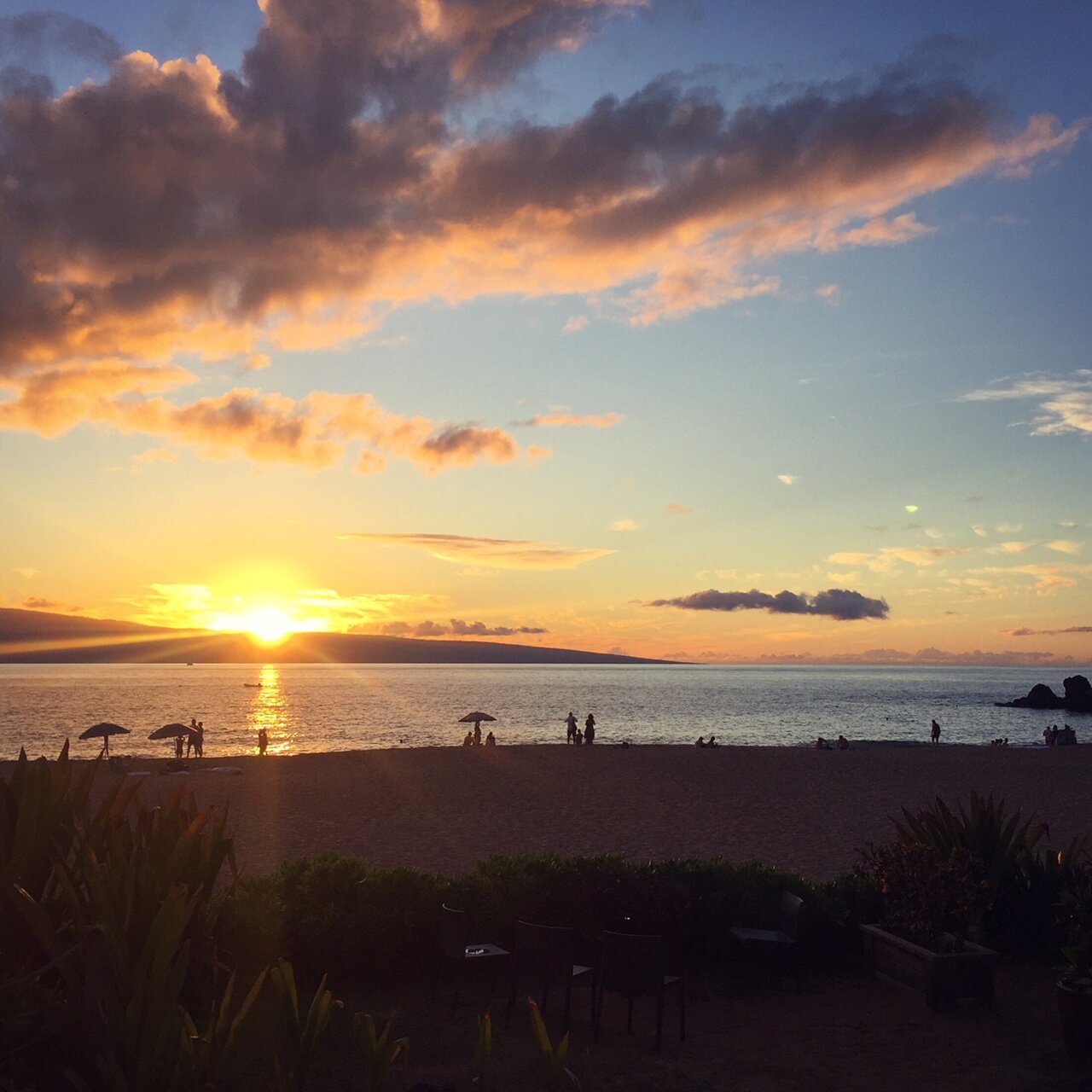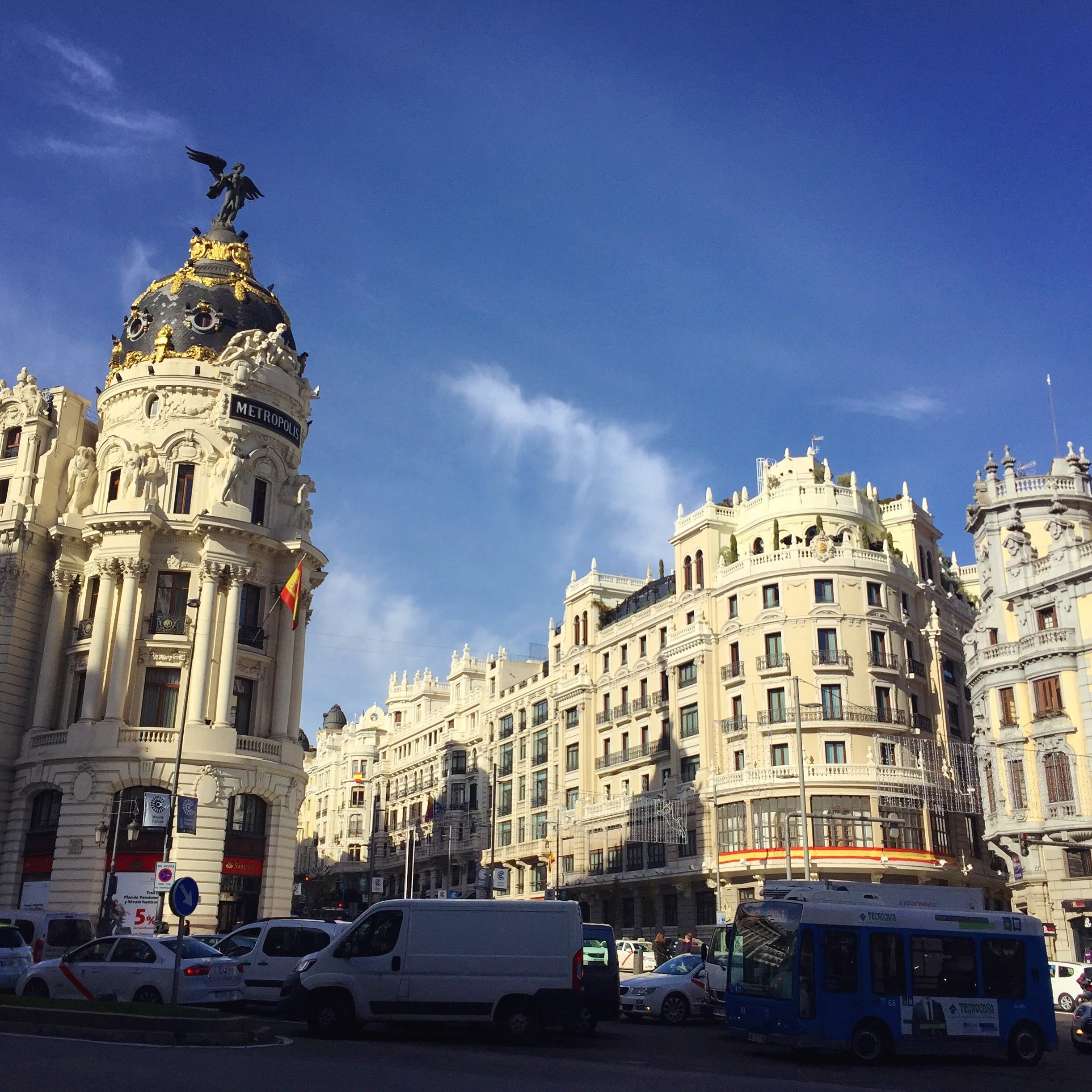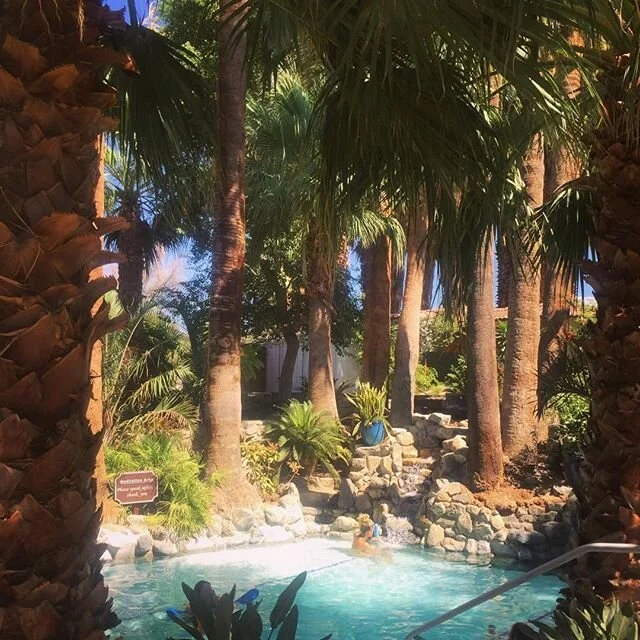Patagonia. It’s on the top of so many travellers’ lists for a reason. Rugged mountains. Unique wildlife. Vast expanses. And, adding to its mystique, so very far away.
I had the opportunity a couple of years ago to travel overland from Ushuaia, Argentina (the city on the very tip of South America) all the way to Santiago, Chile, over the course of 26 days. The trip took us through the typical destinations of a Patagonia itinerary (Torres del Paine, El Chalten/Mt Fitz Roy, El Calafate) as well as to some less-common destinations, including the remote Carretera Austral, plus Bariloche, Futalefú and Pucón.
Overlanding is a cheap, easy way to travel through Patagonia
What is overlanding, you ask? Overlanding is a style of travel where you in a vehicle that’s been equipped to travel on almost any kind of road (typically the frame of a big truck with comfy coach-like seating inside) that also carries whatever you need to be completely self-sufficient along the way (namely tents and cooking gear).
A tent at one of the camps along the W-Walk in Torres del Paine, Chile
You sleep in tents (or in hotels or hostels, depending on the trip) and also make many of your meals together, with money you contribute at the beginning of the trip to a kitty. You are expected to set up and take down your tents, cook and clean together, as well as follow any other expectations or tasks set forth by your trip leader (such as keeping your overlanding vehicle clean and tidy).
For those of you who’ve read my blog for a while, you may remember I travelled with an overlanding company when I went through Kyrgyzstan and a bit of Uzbekistan.
There are pros and cons in general to traveling overland, and it’s definitely not a style of travel I’d recommend to just anyone. Regardless of where you go, the inherent nature of camping and communal cooking is just not going to be everyone’s preferred mode of travel. And that’s totally OK.
But, for those who have a thirst for adventure, don’t mind roughing it, like being around other travellers, and want to travel economically, overlanding is a great way to get off the ‘beaten path’ and have an action-and-destination-packed trip.
What are the pros and cons of overlanding in Patagonia?
Let’s dig in.
Pro: overlanding makes logistics way easier
If you look at a map, you’ll notice that Patagonia is HUGE! One advantage to overlanding through Patagonia is covering large distances without having to rent a car, spend a lot of time on buses or spend a lot of time and money travelling between airports. For example, getting from Torres del Paine to El Calafate can take six hours on a bus, or 3.5 hours on a plane. You also have to get to the bus station or airport and to your next hotel. With everyone and their stuff all in one place, you just hop in your overland vehicle and go. To knock off all the destinations on our itinerary as an independent traveller, you’d have to do a ton of work to figure out planes, trains, and automobiles, plus making your way through various border crossings back and forth through Argentina and Chile.
The overlanding company also organized the W-Walk for us and had everything set up for other activities (such as glacier climbing, white water rafting, more trekking, etc.), which meant it was all pre-arranged. These endeavors can take up time to figure out when you’re travelling on your own.
Con: you’re still stuck on an overlanding vehicle
I travelled with Dragoman (who I travelled with on my Silk Road trip as well) and while I loved my Silk Road adventure, I did not love the experience as much in Patagonia. Why? Well, for starters, our group was huge. Our bus was totally packed and with the loooooong drives in between places (much of it through cold, windy, and hostile territory, even at the height of “summer” in late December/early January) it meant for a fairly cramped and crowded experience.
Me on a quick stop our group made to take pictures of the famous Mt Fitz Roy in Patagonian Argentina
Pro: you don’t have to figure out anything besides getting to/from the start and final cities
All I had to do was show up in Ushuaia and meet up with the group, then say goodbye in Santiago, Chile. All of the hostels and campsites where we stayed were pre-arranged by the overlanding company. Easy!
Con: you have no choice about where you stay
When I read before booking this trip that we’d be staying partly in hostels, I envisioned some kind of cute huts from the Swiss Alps that would still feel spacious and comfortable. Instead, we were cramped into tiny rooms filled with bunk beds — often 8 to 10 women in one room, sharing one bathroom. One of the hostels the bed I got stuck with I could barely get in and out of because the space between it and the top bunk was so small. (I’m 5’9” and this was not pleasant or fun.) After being on a crowded bus for several hours, I felt tired and in need of “alone time”, which was impossible with so many people sharing a room. I quickly realized that my tastes in travel have changed since the overlanding trip in 2015 in Krygyzstan! (Where, also, our group size was a lot smaller and we stayed in hotels when we weren’t camping where I only shared a room with one other woman.)
Glacial lakes at the border between Argentina and Chile
Pro: you will see some absolutely incredible places many people don’t get to see in Patagonia
One of the places we visited was Chile’s Carretera Austral, a remote region of Patagonia that’s further north than the typical destinations of Torres del Paine and El Chaltén. Typically, you need a 4x4 or car with excellent off-road tires, plus enough fuel to get through some of the long distances. It’s one of the most spectacularly beautiful places I’ve ever been, and I feel fortunate that I’ve seen it. We also hiked the W-Walk in the opposite direction which has some advantages (fewer people hiking the same way) and visited Bariloche, Futalefú and Pucón, not normal destinations on most people’s Patagonia itineraries.
Con: you will have to do a lot of camping
One thing that makes a trip like this possible is the abundance of camping that’s on the itinerary. While we did stay in hostels in El Calafate, El Chaltén, Bariloche and Pucón, there were many, many nights of camping, including a night of bush camping outside a horrendous abandoned building near the Straight of Magellan and a night at a campground somewhere north of El Chaltén near a border crossing back into Chile. We also camped at Futalefú and it was one of the more uncomfortable places we slept (rocky, on a hill) and did not contribute to a good mood or helping me recover from the awful cold I got pretty much the second I landed in Ushuaia.
Pro: overlanding through Patagonia is the cheapest way to travel there
Horseback riding in Cerro Castillo at the southern tip of Chile’s Carretera Austral
The cheapest way to travel through Patagonia is definitely with an overlanding company! Not only does the cost include the price of getting to all the different places (which, if you do them independently through buses and airplanes, is not cheap), it also includes the accommodation (hostels and lots of camping), the entrances to the national parks (mostly the cost of visiting Torres del Paine), and most of the food (since on an overlanding trip you pool together money in a kitty and take turns cooking for the group). If you are determined to travel to Patagonia but don’t have much money or just want to save a ton, an overlanding trip is the way to go.
Con: you will have to wake up at the crack of dawn or earlier a lot
Downside to the cheapness of overlanding through Patagonia: you’ll be regularly waking up at 5:45 or 6 am to pack up camp and head on to the next destination. Even earlier if you happen to be in charge of making breakfast for the group. The entire group is expected to clean up from the meals together as well, and if your trip leader wants to make an early start to ensure arriving at your next destination with enough time to do it all over again (set up tents, make dinner, etc.), you may be working hard to get on the road as early as 6:30 or 7 am. It was rough!
Pros: you’ll have lots of people to travel with
The incredibly gorgeous Carretera Austral in Chile, one of the most beautiful places I’ve ever been!
If you’ve been a solo traveller like me, it can get a little lonely. Overlanding ensures you’ll have a bunch of other travel companions. It also seems to attract in a lot more Australians and Brits than other forms of travel; on this trip I was the lone American!
Cons: you may get stuck with people you don’t like
My group on the Silk Road was mostly people I enjoyed. My trip through Patagonia was a different story. While there were definitely some great folks, our group was so big it felt like people broke off into cliques and had more clashing personalities than my Silk Road tour. It also seemed like it attracted in people who were really into the athletic pursuits of Patagonia (hiking, ice climbing, etc.) as opposed to the active-yet-intellectual people who were drawn into the history and beauty of the Silk Road. There were the competitive ones bragging about hiking to the destinations first (uh, who cares?) and others who spent the trip gathered in a small group smoking and not talking to anyone else. In the long run, none of it matters, but it definitely did not lend itself to the same magical experience I had with the others on my Silk Road journey.
Pros: you’ll get an experience of Patagonia that other travellers won’t have
The overlanding truck I travelled in across Patagonia, here stopped just outside the town of El Chaltén (that’s Mt Fitzroy in the distance. The truck carries the group and their luggage, plus camping and cooking gear.
We crossed the border between Argentina and Chile at a couple places that most people would fly over, or not be able to cross at all unless you rented a car. Meaning we got to see some absolutely spectacular land. Many people might break the Carretera Austral into a separate trip from Southern Patagonia, or venture to Bariloche as part of a different trip around Argentina. To be able to see so much of Patagonia from the vantage point of an overland vehicle means you get a real feel for its vastness and size in a way that you’ll simply not get if you only bop around via plane to a few of the region’s highlights.
Cons: you’ll be exhausted!
I got sick at the start of the trip and due to the intensity of the trip (lots of hiking, camping in cold weather, early mornings, long drives) I was basically sick for the entire duration. Add to that really loooong flights from San Francisco to Ushuaia and back from Santiago and I was pretty much done with travel for a long time after I got home.
The bottom line
I recommend overlanding through Patagonia for people who want to:
• travel very cheaply in an expensive part of the world
• enjoy travelling with others
• want to see A LOT in a relatively short period of time
• have enough time to do it (my trip was 26 days)
• like being really active
• enjoy the convenience of someone else planning the logistics
• want to partake in a lot of activities without doing much legwork to sort them out (e.g., glacier walk, white water rafting, W-Walk, etc.)
• don’t mind roughing it
I would not recommend overlanding through Patagonia to people who:
• want to pick where they stay and where they go
• don’t like camping
• only have a short time (e.g., a week)
• want to go at their own pace
• don’t like group travel
Would I overland through Patagonia again?
I would go on an overland trip again, but I would not do it through Patagonia unless I went with another tour company.
This particular trip was not one of my favorites. I am so grateful I got to go and that I got to see some of the most beautiful places in the world. Doing the W-Walk was amazing, seeing some remote parts of Chile and Australia was a true blessing, and I really liked many of the people on the trip that i met.
However, I hated staying in the hostels (I learned on my trip in Southeast Asia in 2015 that I am past the age of enjoying staying in them) and didn’t love all the camping we did. I would have preferred more comfortable accommodation and not having to wake up quite so early all the time. If I were to do it again, I might save more money to go with a higher-end travel company. (Elva, a woman I knew from my Silk Road trip happened to be on an overlanding trip through Patagonia, happened to be in Pucón at the same time as my group — her tour company had them sharing hotel rooms, which is how I would recommend doing it to someone who has the money.)
If you’re dreaming of Patagonia, go for it! And if you’re thinking about going with an overland company, consider the pros and cons before booking your trip. There are great reasons to do it, but it may not be for everyone.
Before I joined the Dragoman group at a hostel in Ushuaia, I stayed at the wonderful Inn Hostería Patagonia Jarke, which I highly recommend. After the tour finished, I went to Valparaíso for a couple nights, then spent a night at Matildas Hotel Boutique in Santiago, Chile, which I also recommend!
Are you planning a trip to Patagonia? Have any questions about overlanding? Ask away!
